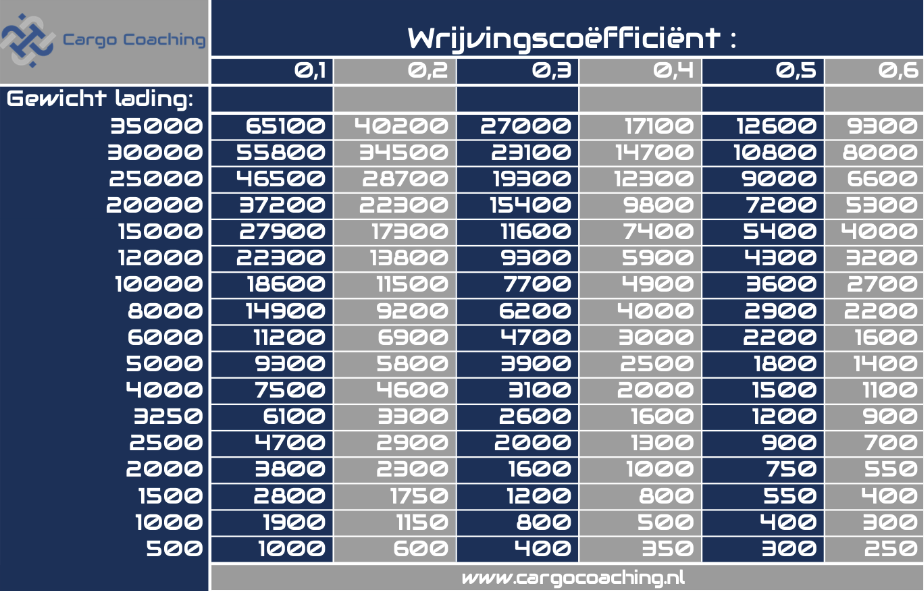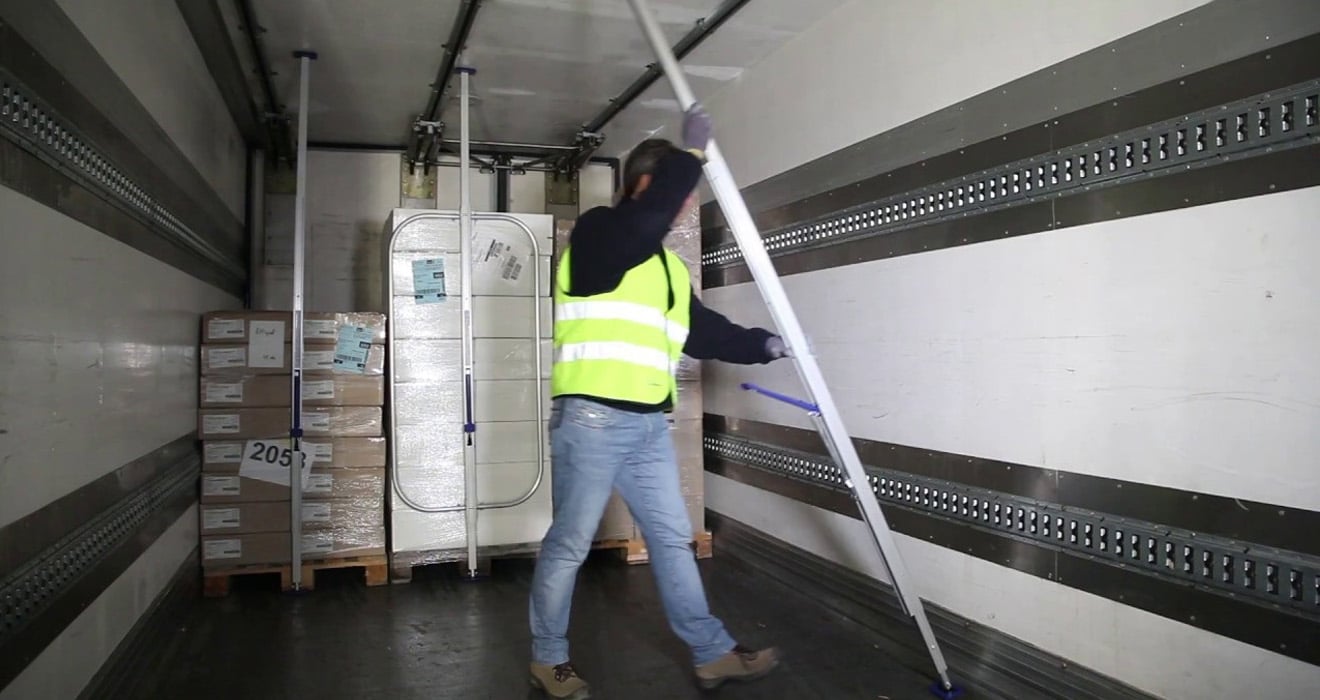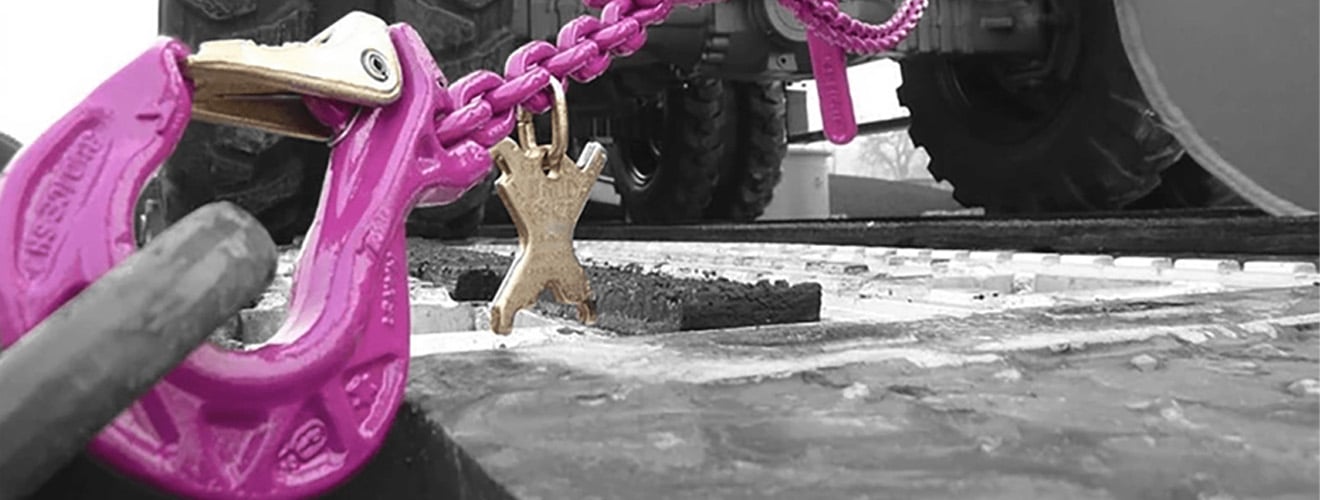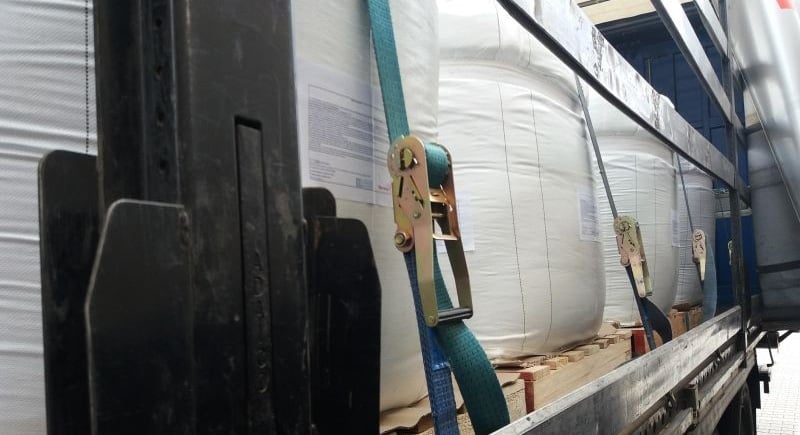
Securing methods using lashings
To calculate how many lashings you need, first determine which securing method will be used. There are several methods to secure cargo with lashings. The two most commonly used methods are tying down and diagonal securing. Always use lashings that have been certified according to EU standard 12195/2. You also need the cargo weight and the coefficient of friction. The calculation cannot be done without the weight and the coefficient of friction.
1. Tying down
For free-standing cargo on road transport you need at least two lashings. The lashings are connected to the loading floor from the one lashing point over the cargo to the other lashing point. This method exerts downward force. For calculating the number of lashings needed, several data are required, such as the vertical angle, coefficient of friction and tensile force.
Vertical angle
Firstly, determine the vertical angle which must be at least 25 degrees. The best result is achieved at an angle of 90 degrees.
Coëfficiënt of friction
The coefficient of friction is dependent on the combination of materials used and the conditions. A dirty loading floor should be avoided. The friction coefficient of 0.6 can only be achieved with certified anti-slip mats.
Tensile force
The tensile force (STF) is the tension that the ratchet can apply to the lashing. This value is always specified on the label of the lashing.
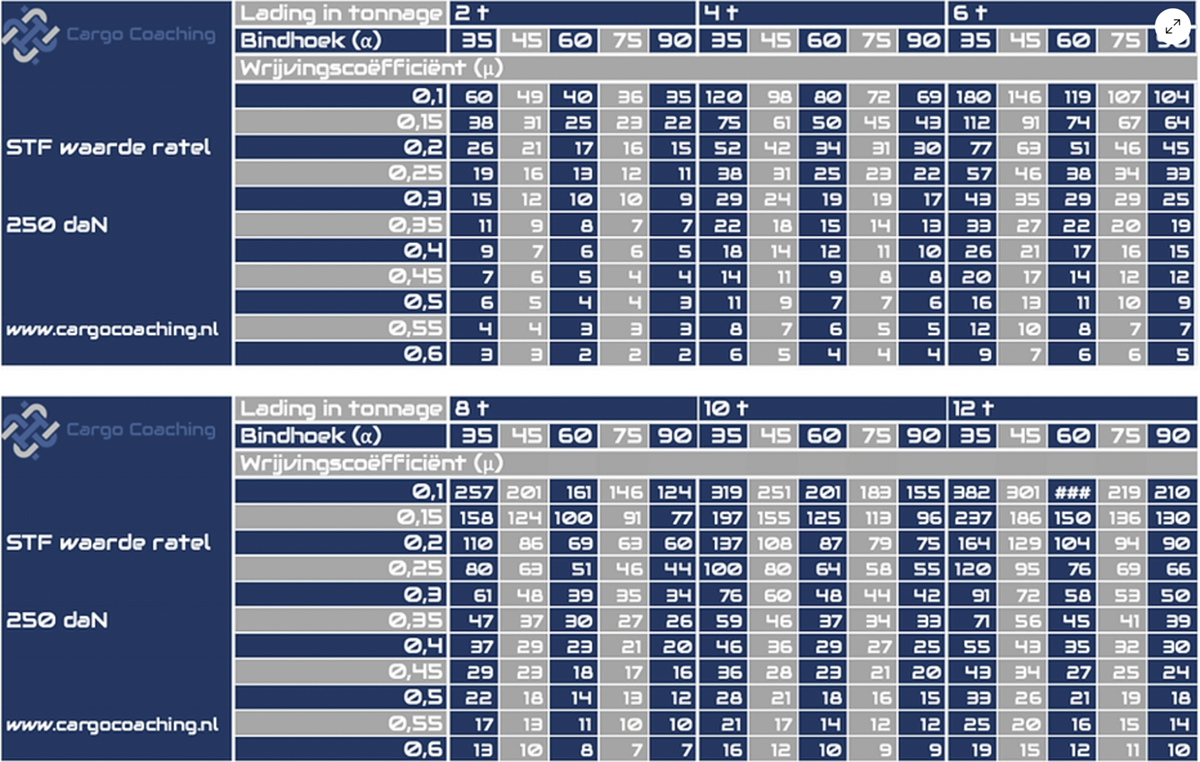
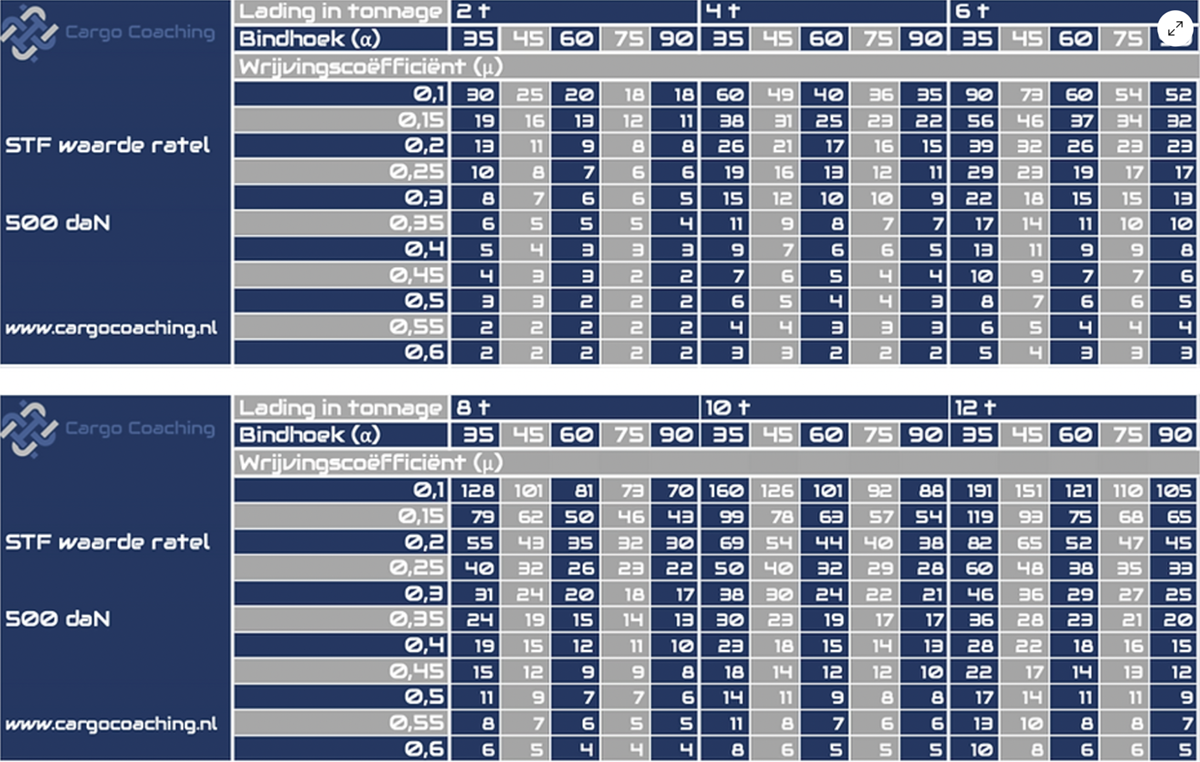
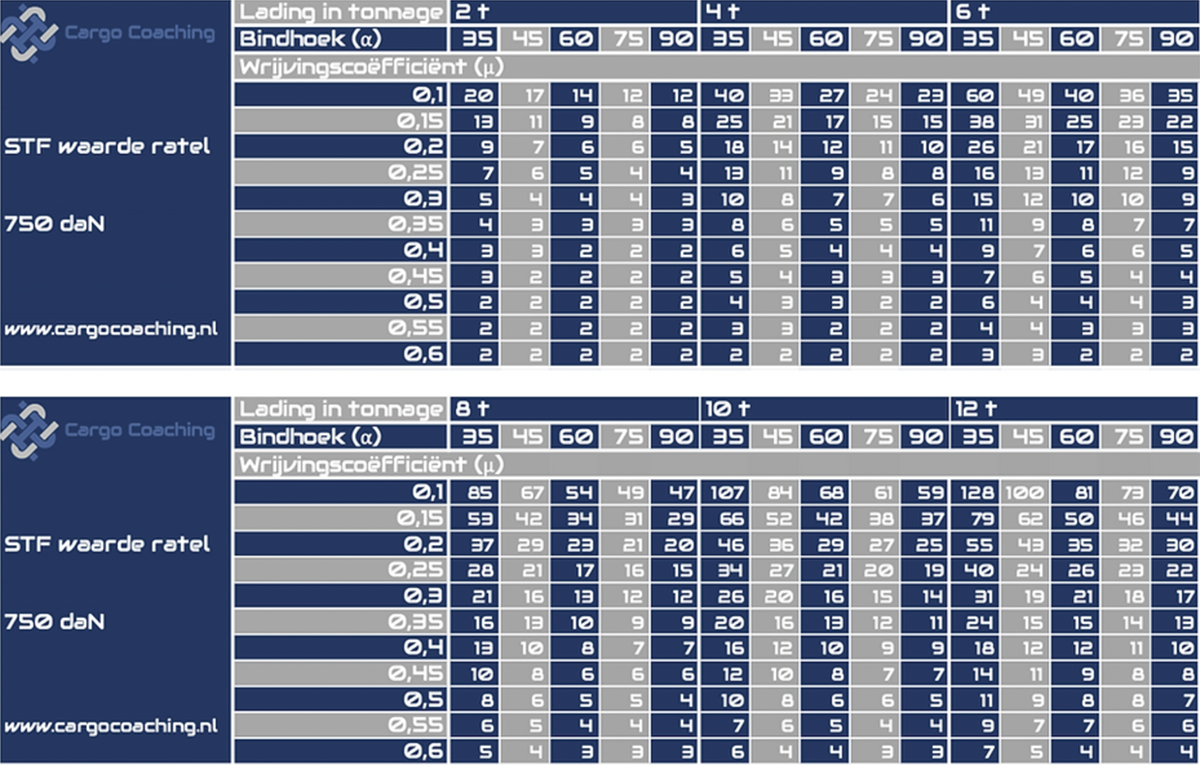
2. Diagonal securing
Diagonal securing ensures cargo is held in place with four lashings directed forwards, backwards, and across the sides. To do so, use is made of fixed lashing points on the load and on the loading floor. It is important to calculate the correct tensioning capacity of the lashings. Several data are required for this calculation.
Vertical and horizontal angle
First determine the vertical angle, which must be between 20 and 65 degrees. Then determine the horizontal angle, which must be between 6 and 55 degrees.
Coefficient of friction
The coefficient of friction is dependent on the combination of materials used and the conditions. A dirty loading floor should be avoided. The friction coefficient of 0.6 can only be achieved with certified anti-slip mats.
Using the above data and formulas, the number of lashings and correct tensioning capacity can be calculated.